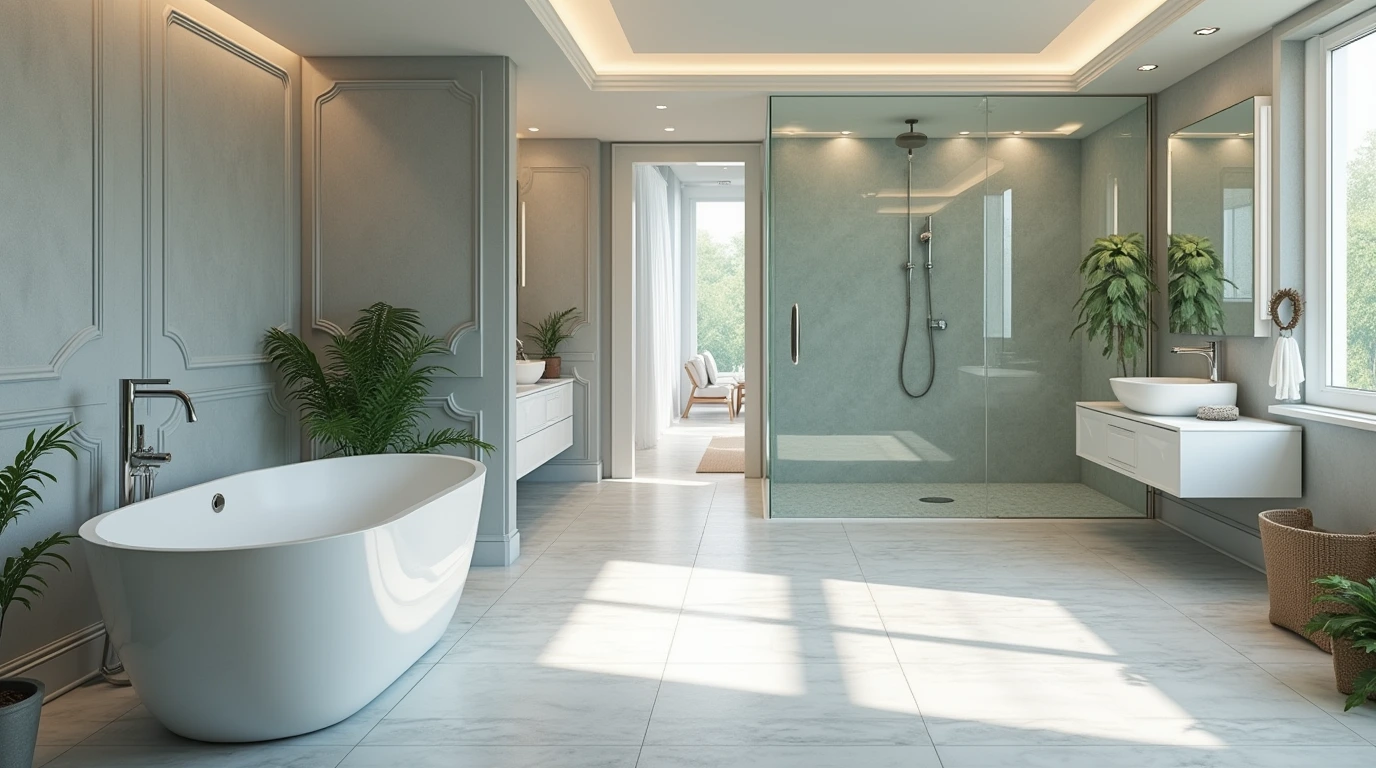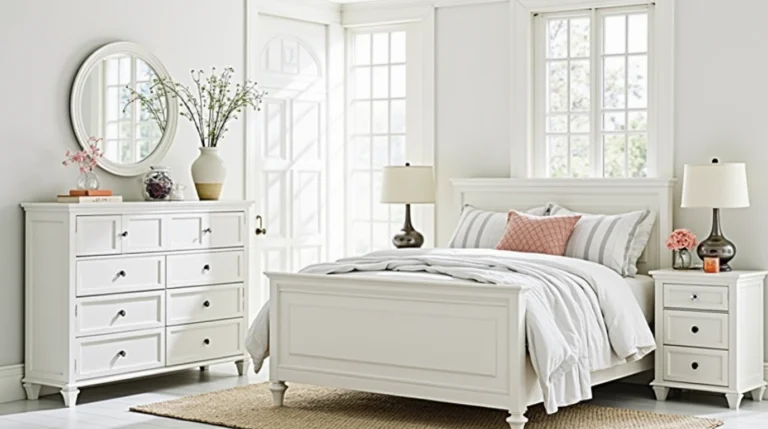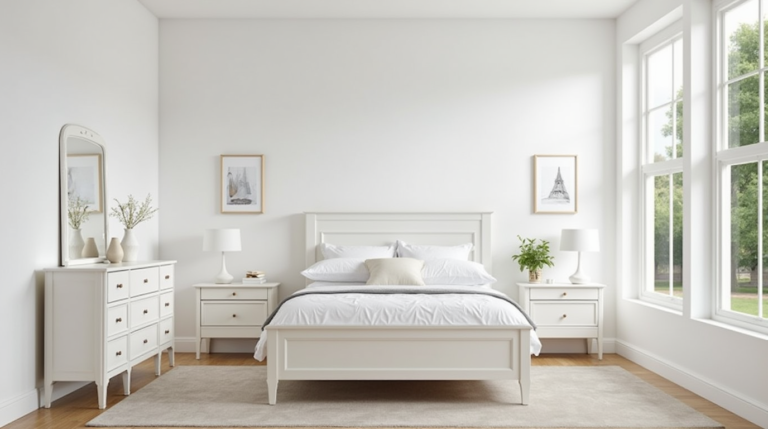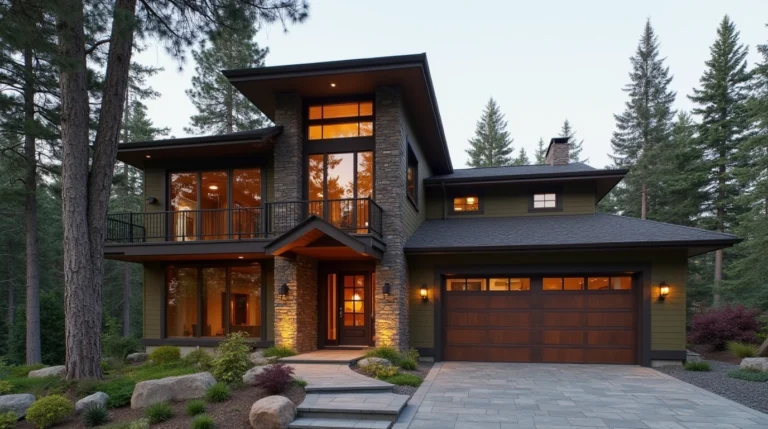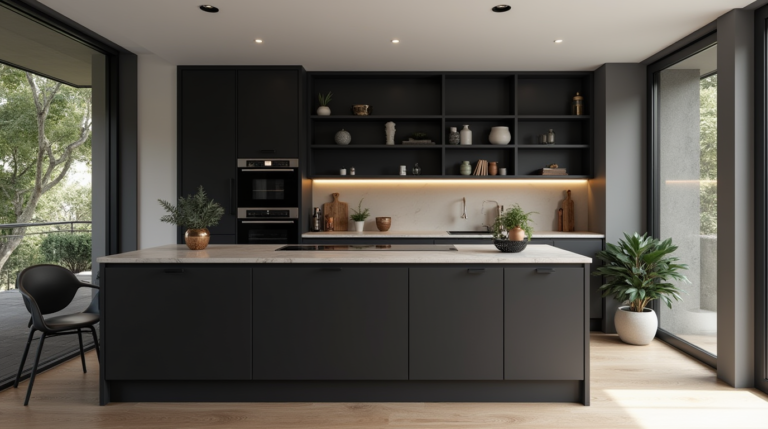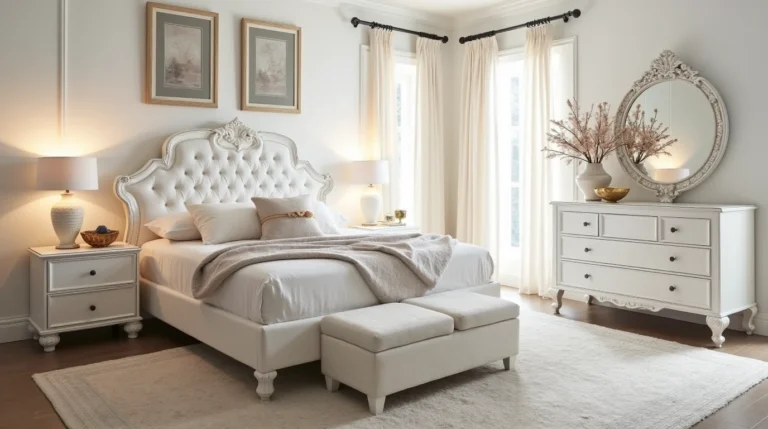“10 Expert Tips for Designing a Bathroom in HomeDecoStyle: Architect’s Guide”
When designing a bathroom, it’s important to balance both style and functionality. Architects’ tips for designing a bathroom focus on making the space more efficient, comfortable, and visually appealing. In this post, we’ll explore how you can optimize your bathroom by using expert insights for designing a bathroom that meets all your needs.
Architects’ Tips for Designing a Bathroom: 10 Expert Ideas
When designing a bathroom, it’s important to balance both style and functionality. Architects’ tips for designing a bathroom focus on making the space more efficient, comfortable, and visually appealing. In this post, we’ll explore how you can optimize your bathroom by using expert insights for designing a bathroom that meets all your needs
Start by thinking about the layout:
- Do you need more storage?
- Is the sink, shower, and toilet arranged logically for comfort and efficiency?
- Can you move freely within the space?
Architects recommend considering built-in storage options like wall-mounted cabinets, shelves, and vanity units to save space. You can also optimize multi-functional designs, such as a combination bathtub and shower unit or a mirror with integrated storage behind it.
Maximizing function means creating a space that works for you and your family’s needs. So, ensure you leave plenty of room for both basic and specialty needs such as a shower bench, towel racks, and extra storage for toiletries.
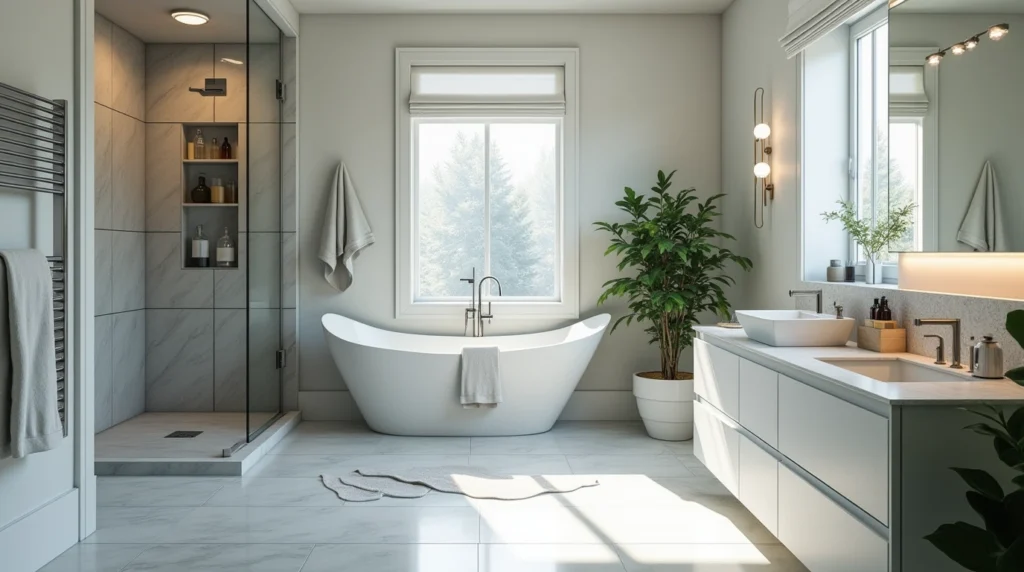
2. Choose the Right Materials for Your Bathroom
The right materials can make a bathroom durable, easy to maintain, and stylish. In bathroom design, materials should be moisture-resistant, easy to clean, and long-lasting. Architects recommend materials that can withstand humidity and daily wear.
Consider materials such as:
- Ceramic tiles: These are durable and come in various styles, from modern to traditional.
- Marble: Known for its elegance, marble is timeless but requires proper maintenance to avoid stains.
- Granite or quartz countertops: These are non-porous, durable, and available in many beautiful finishes.
For eco-conscious homeowners, consider using sustainable materials, such as bamboo for cabinetry or recycled glass tiles. These materials not only contribute to the environment but also bring a unique touch to your bathroom.
3. Pay Attention to Lighting
Proper lighting is essential to bathroom design. It impacts the mood, functionality, and aesthetic appeal of your space. A well-lit bathroom is not only more inviting but also safer, especially when you are getting ready in the morning or at night.
Architects recommend layering lighting in three ways:
- Ambient lighting: This is the general overhead lighting that illuminates the entire space. It can be provided by ceiling fixtures or recessed lights.
- Task lighting: Placed around mirrors and vanities, this lighting helps when you’re performing tasks like shaving or applying makeup. A well-lit mirror is crucial for these activities.
- Accent lighting: This adds drama and style by highlighting key elements in your bathroom, such as artwork, plants, or architectural features.
Consider using dimmer switches, which allow you to control the intensity of the lighting based on your mood and time of day. Additionally, LED lights are energy-efficient and have a longer lifespan, making them ideal for bathroom settings.
4. Incorporate Smart Technology
With the rise of smart homes, incorporating technology into your bathroom is a great way to enhance convenience and luxury. Smart features can help optimize your bathroom experience, making it more efficient and personalized.
Some popular smart bathroom features include:
- Smart mirrors: These mirrors can display the weather, news, and even connect to other smart devices in your home.
- Voice-activated faucets: Allow you to turn the water on and off without touching anything, ideal for when your hands are full or messy.
- Heated floors: Provide warmth during the colder months, creating a cozy and comfortable atmosphere.
- Smart toilets: These high-tech toilets come with self-cleaning features, automatic lid opening, and even adjustable seat warming.
By integrating technology, you not only improve functionality but also introduce a modern, luxurious touch to your bathroom.
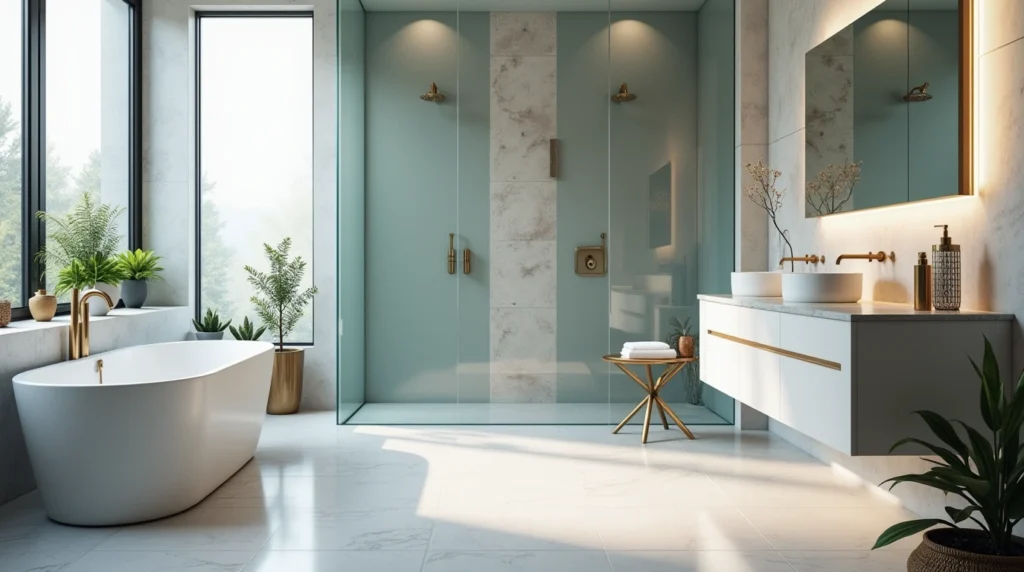
5. Think About Storage Solutions
Storage is one of the most important aspects of designing a bathroom. The bathroom often contains many items, including toiletries, towels, and cleaning supplies. Without proper storage, these items can create a cluttered and chaotic space.
To create an organized, clutter-free bathroom, architects recommend:
- Built-in shelves: Use wall space to install shelves for storing toiletries or towels.
- Vanity storage: Consider cabinetry with drawers and hidden compartments for easy access to essentials.
- Hooks and racks: Install hooks for hanging towels or robes to free up space in cabinets.
Another creative storage option is installing a medicine cabinet with mirrors. This solution gives you both functionality and extra storage while maximizing wall space.
6. Create a Spa-Like Ambiance
Transform your bathroom into a spa-like retreat by focusing on creating a relaxing atmosphere. One of the best bathroom design ideas is to choose calming colors and luxurious features that promote relaxation and well-being.
Here are a few ways architects recommend enhancing your bathroom for a spa-like ambiance:
- Color palette: Soft, neutral colors like light blues, greens, and whites work well to create a serene environment.
- Freestanding bathtubs: If space allows, a freestanding tub can serve as the focal point, providing a sense of luxury.
- Textiles: Use soft, plush towels, bath mats, and robes to add warmth and comfort to the space.
- Aromatherapy: Incorporate essential oils or scented candles to create a calming atmosphere that relaxes the mind and body.
By introducing these spa elements, you can elevate your bathroom to a luxurious, peaceful oasis.
7. Optimize Natural Light
One of the most desirable elements in bathroom design is natural light. Not only does it make the space feel brighter and more spacious, but it can also improve your mood. Architects recommend incorporating windows or skylights into your bathroom design for maximum natural light.
However, privacy can be a concern when installing large windows in the bathroom. To solve this, consider using frosted glass or textured glass to allow light in while maintaining privacy.
For bathrooms without windows, architects suggest opting for light fixtures that mimic natural light or using light-colored tiles and mirrors to reflect the existing light and make the space appear more open.
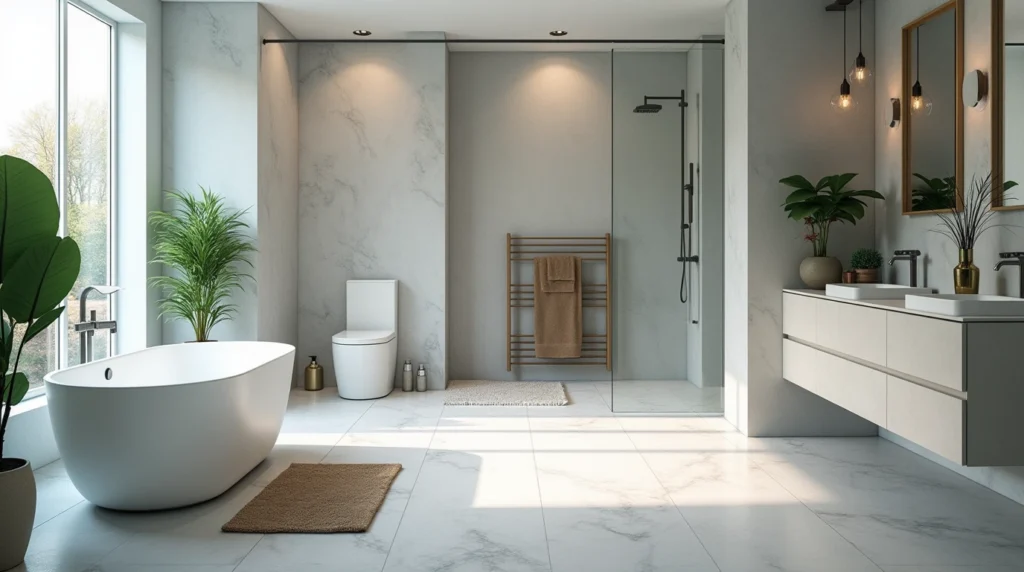
8. Choose the Right Color Palette
The color scheme in your bathroom plays a significant role in the overall aesthetic and feel of the space. Architects recommend using light, neutral colors for smaller bathrooms to create an illusion of space and brightness.
Some popular color choices for bathrooms include:
- Whites and off-whites: These colors create a clean and fresh atmosphere.
- Soft blues and greens: These cool tones promote relaxation and serenity.
- Earthy tones: Warm shades like taupe, beige, and gray can create a more grounded, natural feel.
For larger bathrooms, you can experiment with bold accent colors like navy blue, deep emerald, or even metallic accents for a more dramatic effect.
9. Maximize Space with Clever Design
In smaller bathrooms, space maximization is essential. Architects suggest using floating vanities or wall-mounted toilets to create a sense of openness. By elevating fixtures off the floor, you not only improve the visual appeal but also make cleaning the bathroom much easier.
Additionally, consider installing sliding doors instead of traditional hinged ones to save floor space. Use mirrors creatively to reflect light and create the illusion of a larger space.
10. Make Your Bathroom Eco-Friendly
As sustainability becomes more important in design, many architects are encouraging homeowners to make their bathrooms more eco-friendly. Small changes in the design can have a significant impact on both your utility bills and the environment.
Here’s how you can make your bathroom more sustainable:
- Install low-flow fixtures: These fixtures conserve water without compromising performance.
- Use energy-efficient lighting: LED lights are ideal for the bathroom as they last longer and consume less energy.
- Choose eco-friendly materials: Select sustainable options like bamboo, recycled glass, or low-VOC paints to minimize environmental impact.
Conclusion: Master the Art of Designing a Bathroom
Whether you’re planning a major renovation or just sprucing up the space, designing a bathroom with these expert tips ensures you achieve both function and flair. Make your bathroom a retreat by combining these practical and stylish design ideas

